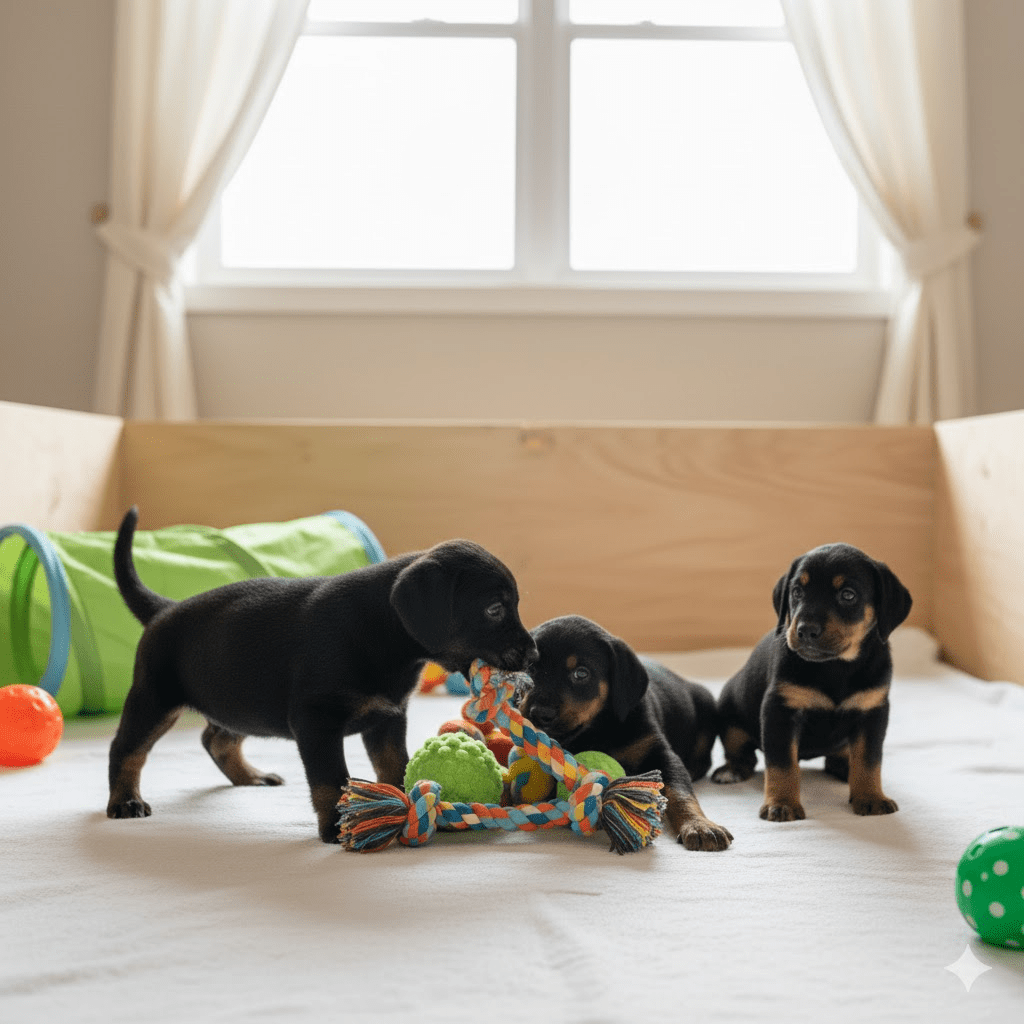In the tender embrace of early life, as depicted in the heartwarming image of two young puppies nestled together, we are granted a profound insight into the foundational elements of canine development and the intrinsic need for social connection. These vulnerable creatures, barely old enough to navigate the world independently, instinctively seek comfort and security in each other’s presence. This immediate bond is not merely an adorable display; it is a critical survival mechanism and a cornerstone for their future well-being. From the moment they are born, puppies are immersed in a sensory world that rapidly shapes their understanding of safety, belonging, and interaction. Their littermates become their first teachers, confidantes, and playmates, imparting invaluable lessons in communication, bite inhibition, and the nuances of canine social etiquette. The warmth of a sibling’s body, the gentle nuzzle, and the shared exploration of their immediate surroundings all contribute to a complex tapestry of experiences that will dictate their emotional resilience and their ability to form meaningful relationships with both humans and other animals. Understanding this crucial stage of development is paramount for any prospective owner, as it underscores the importance of responsible breeding practices, early socialization, and the creation of an environment that fosters healthy emotional growth. The image serves as a poignant reminder that long before they become loyal companions, dogs are highly social beings whose earliest experiences forge the very essence of their personality and their capacity for love.

The first few weeks of a puppy’s life, often referred to as the neonatal and transitional periods, are characterized by rapid neurological and physical development. During this time, puppies are largely dependent on their mother for warmth, nutrition, and stimulation. However, their littermates play an equally vital role. The tactile sensation of huddling together helps regulate their body temperature, especially since their thermoregulatory systems are not fully developed. This physical closeness also provides a sense of security, mimicking the safety of the womb and the comforting presence of their mother. The subtle movements and sounds of their siblings begin to lay the groundwork for their sensory processing, helping them to distinguish between different stimuli in their environment. This early, almost subconscious, interaction is the very beginning of their social learning curve.

As puppies transition into the socialization period, typically between three and sixteen weeks of age, the role of their littermates becomes even more pronounced. This is a critical window for learning appropriate social behavior. Through play fighting and nipping, puppies learn about bite inhibition – how much pressure they can apply before causing pain. If a puppy bites too hard, their sibling will yelp and withdraw, providing immediate feedback that the bite was unacceptable. This repeated interaction teaches them to moderate their bite strength, a crucial skill that prevents them from accidentally harming humans or other animals later in life. Without this early learning, a dog may struggle with impulse control and communication, leading to potential behavioral issues.

Beyond bite inhibition, littermates teach each other about canine body language and communication signals. They learn to interpret growls, barks, tail wags, and various postures, all of which are essential for navigating social interactions in the dog world. This early exposure to a full spectrum of canine communication helps them develop “dog literacy,” allowing them to understand and respond appropriately to other dogs. A puppy deprived of this critical interaction may struggle to read social cues, potentially leading to anxiety, fear, or aggression when encountering other dogs later in life. Their ability to form appropriate social bonds is directly influenced by these foundational experiences.

Puppies also develop crucial confidence and resilience through their interactions with siblings. They learn to cope with minor frustrations, how to share resources (even if it’s just a favored sleeping spot), and how to recover from playful rough-and-tumble. These experiences build their emotional toolkit, helping them to adapt to new situations and challenges throughout their lives. A puppy that has had adequate time with its littermates is often more outgoing, less fearful, and better equipped to handle the stresses of a new home environment and new social encounters. The gentle pushes and nudges seen in the initial image are not just affectionate; they are formative.







